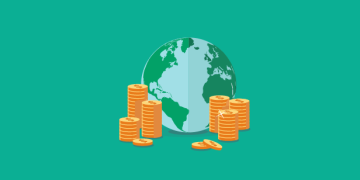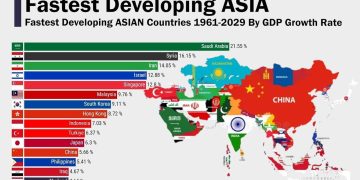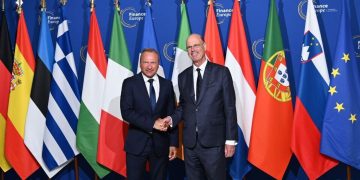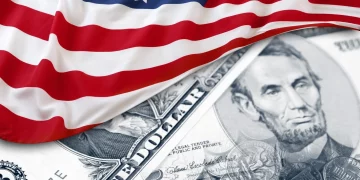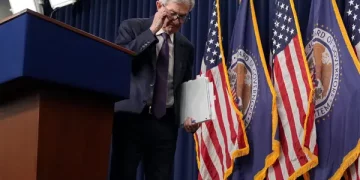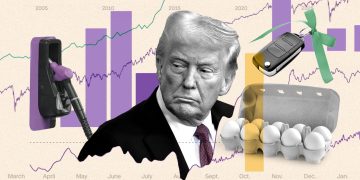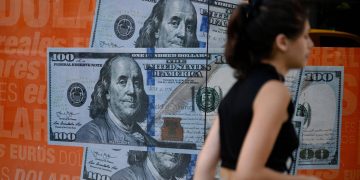1. The Great American Imbalance
As the world’s most powerful economy enters the second half of the 2020s, the United States faces a paradox at the heart of its prosperity: the very engine that has powered its growth for decades — abundant fiscal spending and global demand for the dollar — is also becoming its greatest vulnerability.
By mid-2025, the U.S. national debt has surpassed $35 trillion, or roughly 123% of GDP.
The Congressional Budget Office (CBO) projects that this figure will climb to nearly $45 trillion by 2033 if current trends persist.
At the same time, the annual federal deficit remains stubbornly above 6% of GDP, despite the end of pandemic-era stimulus programs.
Economists call this the “fiscal puzzle” — a situation where the U.S. economy remains dynamic yet increasingly dependent on debt-financed growth, supported by the global demand for dollars that masks the scale of its imbalance.
2. The Anatomy of a Deficit
To understand America’s fiscal predicament, it’s essential to unpack what drives its deficit.
In 2025, the U.S. federal government spends roughly $6.8 trillion a year while collecting about $5.2 trillion in revenue. The resulting gap reflects three structural forces:
- Mandatory spending pressure — Social Security, Medicare, and Medicaid now account for more than 50% of all federal outlays.
The aging baby boomer generation is driving entitlement costs to historic highs, with Medicare alone growing at 6.3% annually. - Interest payments explosion — Rising rates mean the U.S. now spends over $1 trillion annually just on debt service — more than its defense budget.
- Political gridlock — Repeated partisan standoffs have made tax reform and entitlement restructuring nearly impossible. Fiscal inertia has replaced fiscal discipline.
In short, America’s fiscal challenge is not a short-term problem — it is a structural time bomb, ticking louder with every rate hike and every election cycle.
3. The High Cost of “Cheap Money”
The seeds of today’s imbalance were sown in the aftermath of the 2008 financial crisis and the COVID-19 pandemic.
For over a decade, near-zero interest rates and successive rounds of quantitative easing (QE) allowed Washington to borrow cheaply and abundantly.
The implicit assumption — that rates would remain low forever — created what some economists call “debt complacency.”
But as inflation surged in 2022–2023 and the Fed embarked on its fastest tightening cycle in 40 years, that assumption crumbled.
Debt service costs doubled in less than three years, turning what was once a theoretical concern into a concrete fiscal constraint.
Every percentage point increase in average borrowing costs now adds roughly $350 billion to annual interest expenses.
The result? America is spending more to service past promises than to invest in its future.
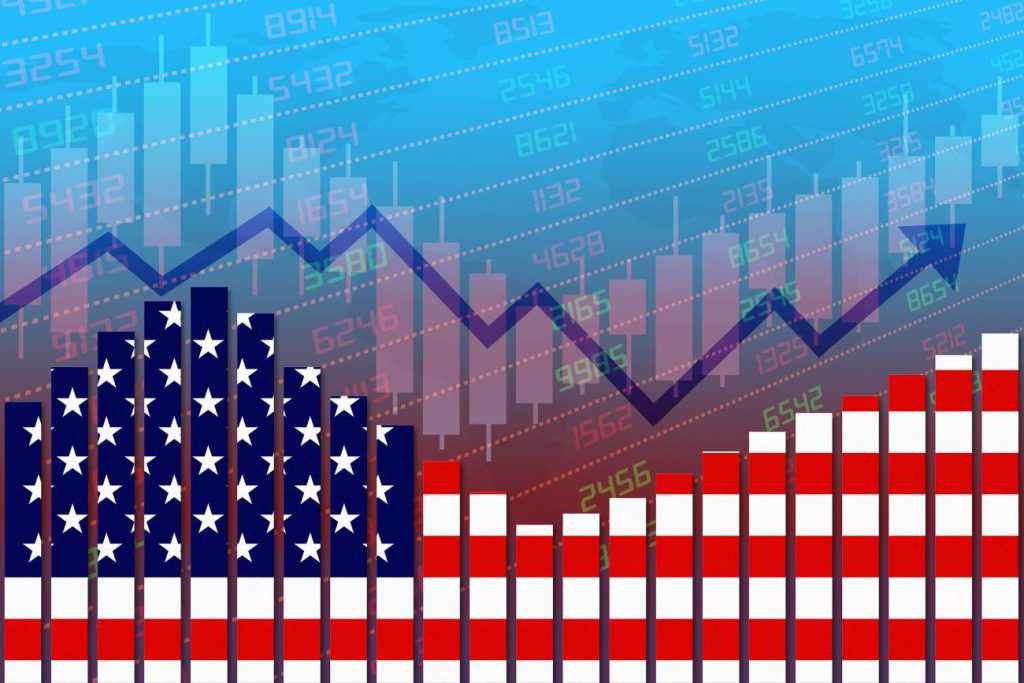
4. The Politics of Perpetual Deficits
In Washington, fiscal debates have become performative rather than substantive.
Republicans decry runaway spending but resist major entitlement reforms. Democrats advocate for social investments but hesitate to confront the revenue gap.
The result is a bipartisan addiction to debt, justified by competing moral narratives: one of growth and one of fairness.
The periodic debt ceiling crises — once rare moments of reckoning — have devolved into political theater. Each time, markets grow more accustomed to the brinkmanship, eroding confidence in the U.S. political system without ever producing genuine fiscal reform.
5. The Global Dimension: The Dollar’s Double Edge
For decades, the U.S. has enjoyed a unique privilege: it can borrow in its own currency, at scale, and at low cost, because the world still wants dollars.
The dollar accounts for nearly 60% of global reserves, 80% of international trade invoicing, and 90% of foreign exchange transactions.
This global demand provides a built-in safety net for U.S. debt. Yet it also creates moral hazard — a sense that deficits don’t matter because the rest of the world will always finance them.
In the short term, that confidence remains intact. In the long term, it risks complacency and overextension.
As emerging economies diversify reserves toward gold, the yuan, and digital currencies, analysts warn that the dollar’s supremacy may gradually erode. Not through a sudden collapse, but through “functional dilution” — a slow shift toward multipolar currency usage.
6. Interest Rates and the Debt Spiral
The interplay between debt and rates is now the single most important macroeconomic relationship in the United States.
Every Fed decision has a fiscal echo: higher rates tame inflation but also inflate the government’s interest bill.
This has created what some economists call “fiscal dominance risk” — a scenario where the Fed’s ability to maintain price stability is constrained by the government’s debt burden.
If the U.S. faces a sharp slowdown in 2026, political pressure on the Fed to ease aggressively could grow.
That would risk reigniting inflation or destabilizing the dollar, creating a vicious cycle of debt-monetization pressures and eroding confidence.
7. America’s Hidden Strengths
Yet it would be premature to sound the alarm bells. The United States still enjoys unmatched fiscal flexibility compared to any other major economy.
Its debt is overwhelmingly denominated in dollars. Its capital markets are deep, transparent, and liquid. Its central bank retains credibility.
And unlike Europe or Japan, America’s demographic profile — while aging — still benefits from immigration and innovation-driven productivity.
Moreover, the global flight to safety dynamic means that, paradoxically, global crises often strengthen the dollar.
Even as fiscal metrics worsen, investors continue to see U.S. Treasuries as the world’s most reliable collateral — a testament to institutional trust rather than balance sheet health.
8. The Real Risk: Political Dysfunction
The biggest threat to U.S. fiscal sustainability is not mathematics — it’s politics.
As polarization deepens, long-term budgeting has become nearly impossible.
Short-term stopgap measures dominate, while bipartisan cooperation erodes.
Investors are increasingly pricing in governance risk, not default risk — the possibility that political paralysis could delay payments or disrupt markets.
Each episode of brinkmanship, from government shutdowns to near-misses on debt ceilings, chips away at America’s fiscal credibility, one negotiation at a time.
9. Rethinking Fiscal Strategy
To escape the debt trap, America needs a credible fiscal strategy — one that balances economic dynamism with sustainability. Three pillars stand out:
- Entitlement reform: Gradual adjustments to retirement age, means-testing for benefits, and healthcare cost controls could stabilize long-term spending.
- Tax modernization: Closing loopholes, broadening the base, and implementing minimum corporate taxes would raise revenues without stifling growth.
- Growth-oriented investment: Channeling debt toward productivity-enhancing areas — green infrastructure, education, digital transformation — rather than short-term consumption.
Fiscal sustainability is not austerity; it’s discipline with purpose.
10. The Dollar’s Destiny
In the long arc of history, great currencies rise and fall with empires. The U.S. dollar’s future depends not only on America’s economic power but also on its capacity for self-correction.
As long as U.S. institutions remain credible and innovation vibrant, the dollar will endure as the global anchor.
But credibility, once eroded, is difficult to rebuild.
The real question for the decade ahead is not whether the U.S. can service its debt — it can — but whether it can do so without undermining confidence in its governance, its discipline, and its promise.
For now, the world still believes in the dollar.
The challenge is ensuring that the belief remains justified.





